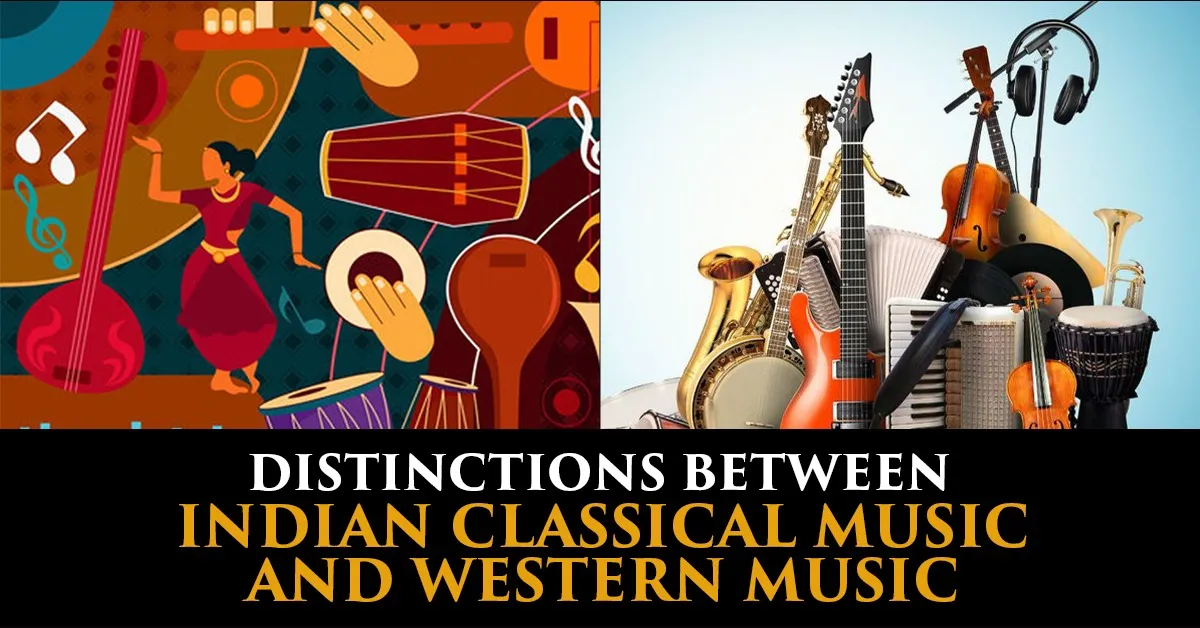


25, September 2024
Music is a universal language, yet there can be various differences in music between two cultures. One of the biggest examples is the difference between Indian classical music and Western music. Both of which have their own characteristics, history and philosophy. If you know about their differences, you would be able to appreciate them more.
Indian Classical Music- It is the oldest music tradition. The music is deeply connected with the spiritual aspect of India, and is connected with religious ceremonies and rituals in India. It is divided into two types- Hindustani and Carnatic .
Western Music- Western Music originates from Ancient Greece and Rome. Its development can be linked to the rise of Western civilization and it has been influenced by various European cultures and traditions. Western Music is often linked with secular and religious contexts, like church services and theatre halls.
Indian Classical Music- The system consists of Ragas and Talas. A Raga is a specific sequence of notes. Each of them have a unique mood and expression. A Tala is a rhythmic pattern that helps structure a performance. To perform a Raga, you need to completely understand it and have the ability to improvise within the framework of the Raga and Tala. Indian classical music does not have a fixed scale. It is known for its expressive nature due to the use of shrutis.
Western Music- it has more structure, using scales and harmonies on fixed intervals. The most used scales in Western music are Major and Minor. Harmony plays an important role in Western Music, with Chords and progression helping in creating a sense of movement and resolution respectively.
Indian Classical Music- A performance is often a solo with the singer showing his skills. First, the music is performed in an alap section, then a more structured jod finishing in jhala. Improvisation is a part, where the musician creates variations within the frameworks of the Tala and Raga. There is also a close interaction between the singer and the audience, with the latter providing feedback to the music through clapping or other expressions.
Western Music- A Western music performance is focused on being more structured and formal. It places an importance on ensemble playing and respects a composer’s written score. The music is usually rehearsed and performed in a concert. A conductor plays an important role in Western Classical Music, making sure the entire ensemble is playing cohesively and in co-ordination. It has various genres like such as symphonies and opera.
Indian Classical Music- It features a variety of instrument like sitar, table and bansuri. Each instrument contributes to improve the overall texture of the music. Vocal performances are considered valuable, with singers using improvisation to express the Raga.
Western Music- Western music covers a variety of Instruments like violins, flutes, trumpets and drums. The techniques for playing these instruments are well-documented which allows for a higher degree of precision and uniformity in a performance. Important instruments like piano and organ are a centre piece in many compositions.
Indian Classical Music- It is a part of the cultural and spiritual traditions of India. It is seen as a way to interact with the divine and express emotions and philosophy. Music is seen as a form of meditation and each Raga and Tala convey their own emotion. The aesthetic value of Indian classical music is in its ability to evoke emotions and create a spiritual environment.
Western Music- Western music is often connected with many emotional and cultural expressions. Like the grandeur of orchestral works to the intimacy of chamber music. It shows the diverse historical and cultural development of the Western world. The aesthetic of Western music is in its ability to convey a wide range of emotions.
Indian classical music and Western music are two rich musical traditions which have different characteristics and cultural significance. The difference is, Indian classical musical emphasizes improvisation and spiritual connection while Western music focuses on structure and ensemble performance. Both music traditions give an insight into their culture and help inspire and influence musicians around the globe. Learning about these traditions not only enhances our understanding of music but also our appreciation.